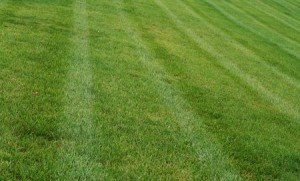Lawn mowing in any season is not a job that everybody relishes. However, it’s an essential task if you want a healthy and good looking garden. Ignoring the necessity of lawn mowing will leave you with an unkempt and untamed lawn, making things even more difficult. This is why cutting down the time you take to mow can be a great benefit. Read on to discover our tips on how to get it done faster:
Thank you for reading this post, don't forget to subscribe!

Step 1: Tackle around your features first.
Finding the fastest approach to mowing your lawn may involve some testing. Features such as flowerbeds, paths and ornamental planters can slow your progress. By cutting around the features first, you will be able to get results faster.
Step 2: Use circular motions
You can save time by reducing the number of turns you need to make. Using a concentric pattern for your mowing can do this for you. You won’t need to struggle to go back the other way if you make turns that are not quite as sharp.
Step 3: Double spiral pattern
Although concentric lawn mowing is a fast approach, you may not want to end up right in the middle of your lawn. You can approach it from another way. Try spiral-mowing.
You would still mow up and down but leave a row in between each row unmown. When you reach the end, then you turn and go back the way you came whilst mowing the unmown rows.

Step 4: Select your direction
If you have a lawn that is wider rather than longer, then mowing with horizontal rows will be faster for you. If it’s longer rather than wider, then mowing along the lengths will enable you to complete the job faster. By mowing the longest way, you can then reduce the amount of turns you need to take. If you have a square lawn, then you can go either way as long as you overlap the rows a little to ensure that you don’t miss any spots.
Faster mowing is also dependent upon good maintenance of your lawn mower. Best results can be achieved by avoiding wet grass.
